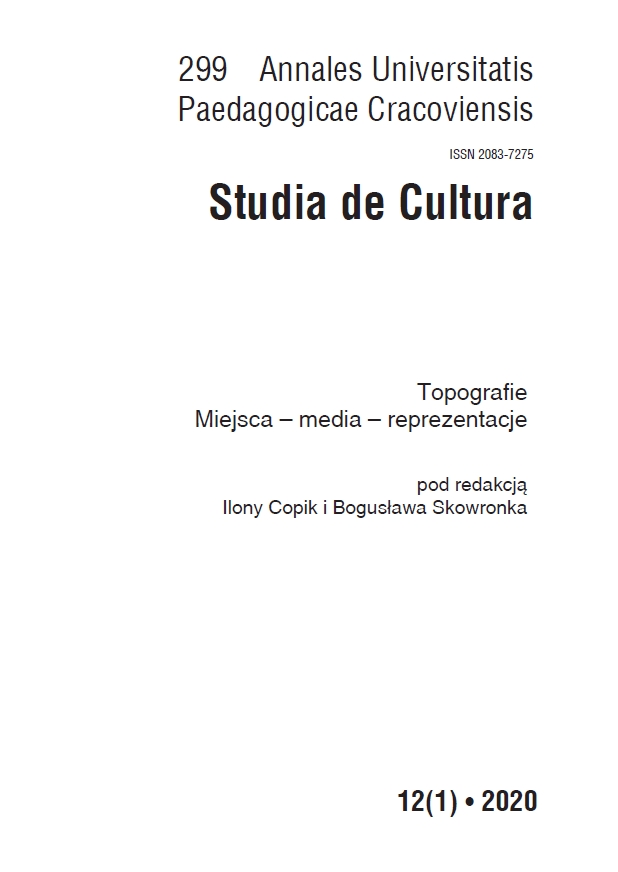Abstract
The purpose of this article is to analyse the chronicles of home films in Java in terms of Péter Forgács realized in the third colonial period included in the film installation entitled Looming Fire. Stories from the Dutch Indies (2013). The detailed analysis of the connections between micro- and macrohistory presents an in-depth study of film transformations looking for the relationship between colonizers and indigenous inhabitants living in Java. Among the most important social mechanisms between them are mimicry and cultural métissage. Accompanied by a strongly outlined representation plan of the colonial elites and royal families, the film episodes reveal the backstage of physical work performed on plantations and factories by indigenous people. The author pays particular attention to the specificity of elite meetings in the salons and the ethnic customs of the Javanese people cultivating their tradition.References
Appadurai Arjun. 1991. Global Ethnoscapes: Notes and Queries for a Transnational Anthropology. W: Recapturing Anthropology. Working in the Present. Richard G. Fox (red.). Santa Fe. 48-65.
Bachmann-Medick Doris. 2012. Cultural Turns. Nowe kierunki w naukach o kulturze. Krystyna Krzemieniowa (przeł.). Warszawa.
Bhabha Homi K. 2012. Miejsca kultury. Tomasz Dobrogoszcz (przeł.). Kraków.
Blümlinger Christa. 2009. Kino aus zweiter hand. Zur Ästhetik materieller Aneignung im Film und in der Medienkunst. Berlin.
Derrida Jacques. 2014. Trace et archive. Image et art. Bry-sur-Marne.
Gabriel Teshome H. 1989. Towards a Critical Theory of Third World Films. W: Questions of Third Cinema. Jim Pines, Paul Willemen (red.). London.
Geertz Clifford. 2010. Po fakcie. Dwa kraje, cztery dekady, jeden antropolog. Tomasz Teszner (przeł.). Kraków.
Ginsburg Faye. 1999. The Parallax Effect. The Impact of Indigenous Media on Ethnographic Film. W: Collecting Visible Evidence. Jane M. Gaines, Michael Renov (red.). Minneapolis - London. 156-175.
Ginzburg Carlo. 2009. „Szerokość geograficzna. niewolnicy i Biblia. Ćwiczenie z mikrohistorii”. Jan Maria Kłoczowski (przeł.). Konteksty. Polska Sztuka Ludowa nr 3. 19-24.
Glissant Edouard. 1991. Poetics of Relation. Betsy Wing (przeł.). Ann Arbor.
Gwóźdź Andrzej. 2004. Technologie widzenia, czyli media w poszukiwaniu autora. Kraków.
Krugler Laetita. 2010. La pelicule sur le seul champ. W: Le Cinéma et après. Rennes. 109-113.
Leprohon Pierre. 1957. Film francuski (1895-1945). Zofia Tubiakowa (przeł.). Warszawa.
Mirzoeff Nicholas. 2000. Introduction. W: Diaspora and Visual Culture. Representing Africans and Jews. Nicholas Mirzoeff (red.). London - New York. 1-16.
Nash Mark. 2009. Between Cinema as Hard Place Dilemmas of the Moving Image as Post-Medium. W: Art of Projection. Stan Douglas, Christopher Eamon (red). Ostfildern. 141-166.
Sikora Sławomir. 2012. Film i paradoksy wizualności. Praktykowanie antropologii. Warszawa.
Sobchack Vivian. 1999. Towards a Phenomenology of Nonfictional Film Experience. W: Collecting Visible Evidence. Jane M. Raines, Michael Renov (red.). Minneapolis - London. 241-254.
Welsch Wolfgang. 1998. Transkulturowość - nowa koncepcja kultury. W: Filozoficzne konteksty rozumu transwersalnego. Część 2. Wokół koncepcji Wolfganga Welscha. Roman Kubicki (red.). Poznań. 195-213.
Looming Fire. Stories from the Netherlands East Indies. 2013. Peter Forgács (reż.).
Bachmann-Medick Doris. 2012. Cultural Turns. Nowe kierunki w naukach o kulturze. Krystyna Krzemieniowa (przeł.). Warszawa.
Bhabha Homi K. 2012. Miejsca kultury. Tomasz Dobrogoszcz (przeł.). Kraków.
Blümlinger Christa. 2009. Kino aus zweiter hand. Zur Ästhetik materieller Aneignung im Film und in der Medienkunst. Berlin.
Derrida Jacques. 2014. Trace et archive. Image et art. Bry-sur-Marne.
Gabriel Teshome H. 1989. Towards a Critical Theory of Third World Films. W: Questions of Third Cinema. Jim Pines, Paul Willemen (red.). London.
Geertz Clifford. 2010. Po fakcie. Dwa kraje, cztery dekady, jeden antropolog. Tomasz Teszner (przeł.). Kraków.
Ginsburg Faye. 1999. The Parallax Effect. The Impact of Indigenous Media on Ethnographic Film. W: Collecting Visible Evidence. Jane M. Gaines, Michael Renov (red.). Minneapolis - London. 156-175.
Ginzburg Carlo. 2009. „Szerokość geograficzna. niewolnicy i Biblia. Ćwiczenie z mikrohistorii”. Jan Maria Kłoczowski (przeł.). Konteksty. Polska Sztuka Ludowa nr 3. 19-24.
Glissant Edouard. 1991. Poetics of Relation. Betsy Wing (przeł.). Ann Arbor.
Gwóźdź Andrzej. 2004. Technologie widzenia, czyli media w poszukiwaniu autora. Kraków.
Krugler Laetita. 2010. La pelicule sur le seul champ. W: Le Cinéma et après. Rennes. 109-113.
Leprohon Pierre. 1957. Film francuski (1895-1945). Zofia Tubiakowa (przeł.). Warszawa.
Mirzoeff Nicholas. 2000. Introduction. W: Diaspora and Visual Culture. Representing Africans and Jews. Nicholas Mirzoeff (red.). London - New York. 1-16.
Nash Mark. 2009. Between Cinema as Hard Place Dilemmas of the Moving Image as Post-Medium. W: Art of Projection. Stan Douglas, Christopher Eamon (red). Ostfildern. 141-166.
Sikora Sławomir. 2012. Film i paradoksy wizualności. Praktykowanie antropologii. Warszawa.
Sobchack Vivian. 1999. Towards a Phenomenology of Nonfictional Film Experience. W: Collecting Visible Evidence. Jane M. Raines, Michael Renov (red.). Minneapolis - London. 241-254.
Welsch Wolfgang. 1998. Transkulturowość - nowa koncepcja kultury. W: Filozoficzne konteksty rozumu transwersalnego. Część 2. Wokół koncepcji Wolfganga Welscha. Roman Kubicki (red.). Poznań. 195-213.
Looming Fire. Stories from the Netherlands East Indies. 2013. Peter Forgács (reż.).
Downloads
Download data is not yet available.

